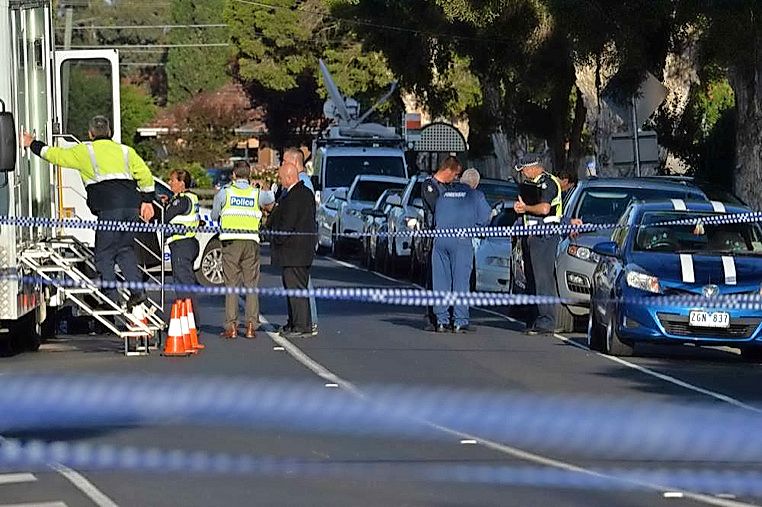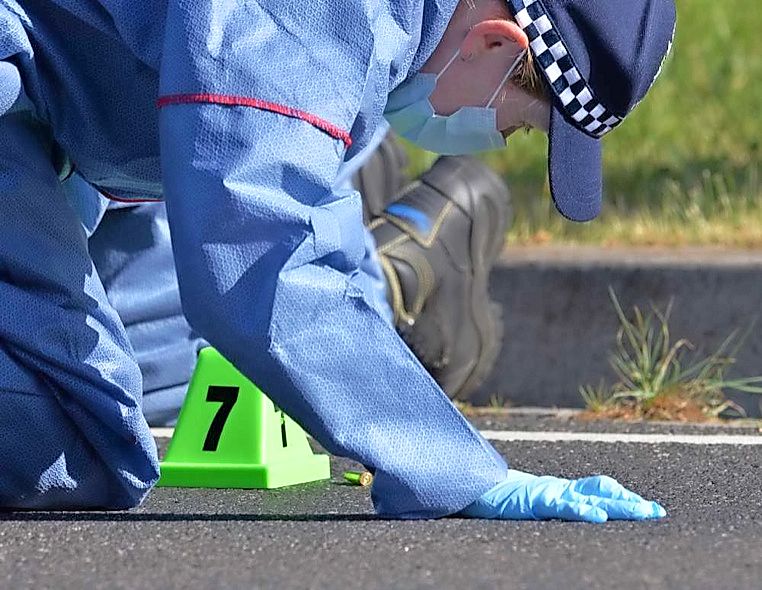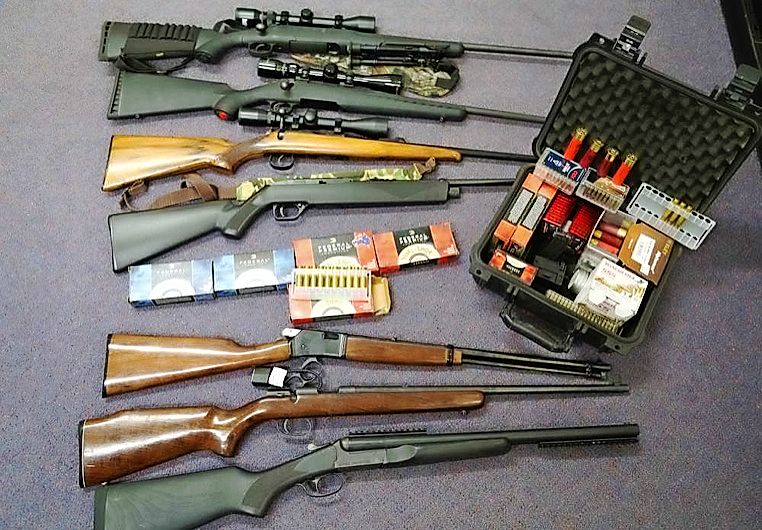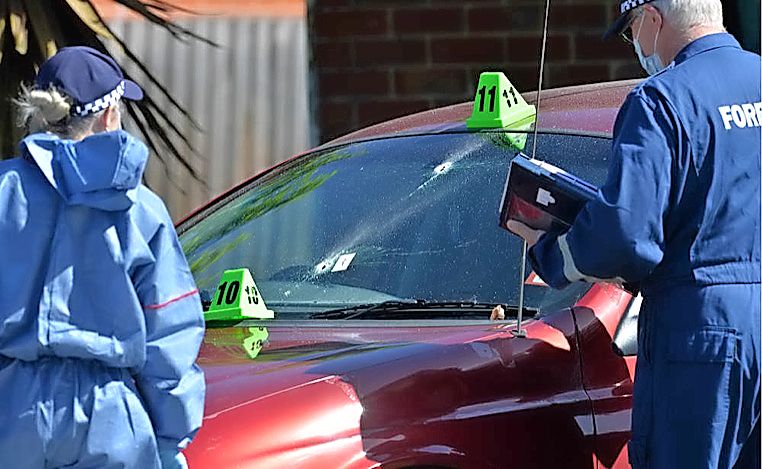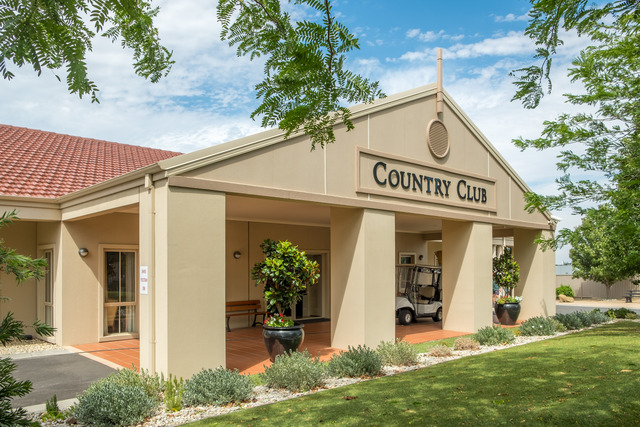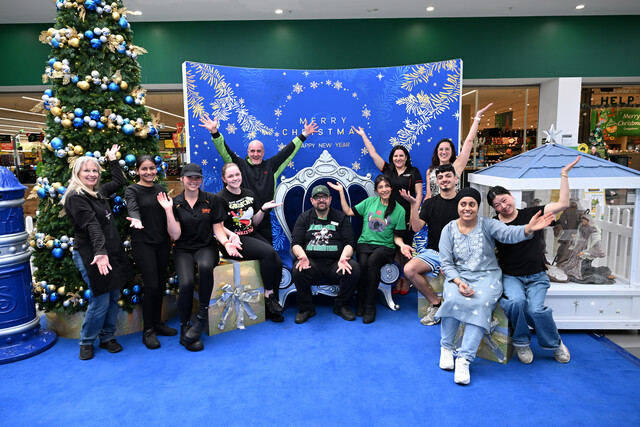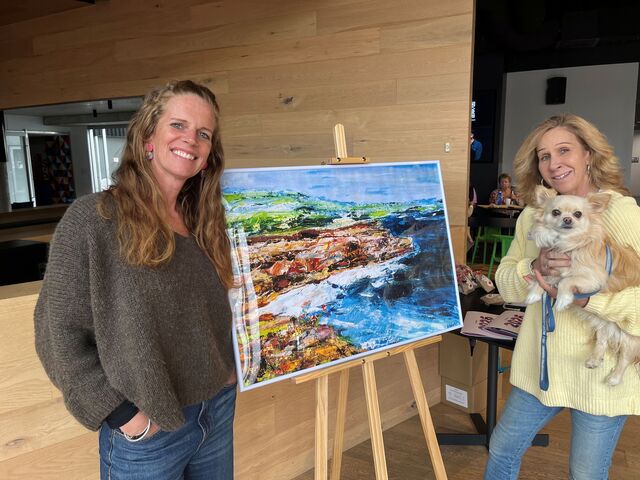When daylight fades, Trevor Bunker is hesitant to leave his Thomastown home.
Since his neighbour, Rachad Adra, was fatally shot last year when a high-powered gun was fired through the front of his house, the Darebin Drive resident says he’s become fearful of venturing out to the shops after dark.
Another Darebin Drive resident, who wanted to remain anonymous, said Melbourne’s spate of shootings last October – there were 12 reported – had forced the family to forego nightly walks.
“We stay indoors now. It’s the looks you get from people,” she said.
Another resident, who has lived in the area for 44 years and also wanted to remain anonymous, said shootings had escalated in the past two years.
“A lot of the time we think it’s fireworks and often it’s not reported,” he said.
CLICK ON THE GUNS FOR DATES AND DETAILS OF EACH SHOOTING. LOCATIONS ARE APPROXIMATE
Less than a month after Mr Adra was killed as he lay in bed beside his four-year-old son, who was injured in the gunfire, police set up an illicit firearms investigation team within the Purana taskforce – a specialist unit established in 2003 to solve the state’s bloodiest gangland murders.
Deputy Commissioner Shane Patton said the team was set up to focus on firearms-related theft, burglary and firearms trafficking.
It’s just one of a handful of teams, including the armed crime squad, the Icarus, Echo and Trident taskforces and the clandestine drugs lab unit, that work in partnership with Customs and Australian Federal Police to tackle the increasingly violent nature of organised crime in Victoria.
March, 2016, is shaping up to be the state’s worst month for shootings in two years; there had been 15 incidents in just five days to March 11. Deputy Commissioner Patton said most shootings had involved drugs and feuds between organised crime gangs fighting to protect their profits.
At a local level, Fawkner-based Acting Senior Sergeant Carla McIntyre said police in north-west metro division 4 were taking a three-pronged approach to gun crime.
She said the strategy used proactive, reactive and disruptive actions involving random daily checks on gun licence-holders’ properties, intelligence gathering and actively targeting people of interest.
A POLICE OFFICER INSOECTS THE SCENE OF A DRIVE-BY SHOOTING IN THOMASTOWN THAT KILLED RACHAD ADRA. PICTURE: JOE ARMAO
“We have a dedicated taskforce that responds to and investigates firearms offences in the community,” Acting Senior Sergeant McIntyre said.
“Their other job is to maintain intelligence in relation to people of interest.”
There are 9803 licensed gun holders in the police north-west metro division 4, which includes Hume, and 11,780 in north-west metro division 5, including Whittlesea.
Whittlesea council has been on the front foot.
Following October’s Darebin Drive shootings, council officers, in collaboration with the Victoria Council of Churches and Red Cross, door-knocked 85 houses in the street to ask about the health and welfare of residents, who were advised to contact the council if they needed support.
Crime prevention committees
Hume and Whittlesea councils recently set up safety and crime prevention committees; Hume’s committee met last week.
A Fairfax Media analysis has found the focus of the state’s gun crime is an area of about 10 square kilometres around Broadmeadows, where at least 12 shootings have been recorded in less than 15 months.
A third of all shootings this year have occurred in this area, bound by Sydney, Camp, Pascoe Vale and Barry roads.
Broadmeadows MP Frank McGuire said enclaves of disadvantage could be to blame.
“The way out is [providing] opportunity.”

